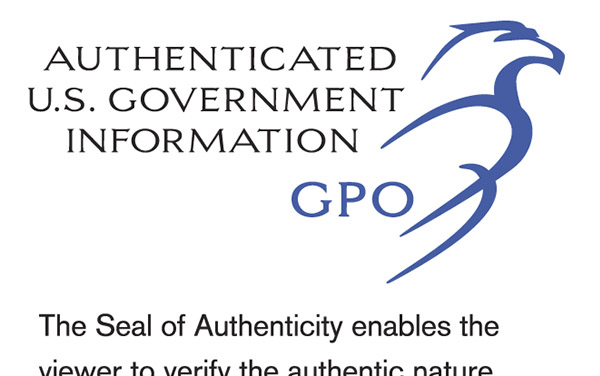Bluebook R. 18 covers how to cite to the Internet and other electronic resources. Generally, the Bluebook encourages citation to print sources when they are available. Any online source that shares characteristics with a print source should be cited according to the rule for the print version.
Citing Directly to the Internet
There are three general formats for structuring a citation. These three general formats are 1) cite the same way you would cite to the hard copy print material, 2) citations that combine the print citation with the electronic citation and 3) citations directly to the electronic version.
THE EXAMPLES ON THIS PAGE USE BLUEBOOK FORMAT FOR LAW REVIEW FOOTNOTES. The key difference with the citation format for memos and briefs, Rule B18, is the type face.
For citing to the Internet in a brief or legal memorandum, see Rules B18.1 and B18.2. One main difference is that the domain name is in regular type, not small caps. Another difference is that according to the 22nd edition of the Bluebook, for law review format, you must archive a copy of the internet source and append archival information. For briefs and memoranda this is not necessary. If you are writing a paper for a law school class, your professor may not require you to have archival information either.
1. Use the Print Citation - R. 18.2.1(a)
Bluebook requires citing to print, unless print is impossible to find, or unless there is a digital source that falls under one of these three categories. If the source falls under one of these three categories, cite to the internet source the same way you would cite to the print source:
1) Authenticated Documents (R.18.2.1(a)(i)): Electronic documents that have a certificate or logo indicating that a government entity has verified that the electronic document is complete and unaltered, as well as comparable to the print version. If the website or internet document you are viewing has such a certificate or logo, you can cite it as if it were a hard copy.
Here is an example of what the GPO seal of authenticity looks like:

For more information on authenticated documents, click here.
Example: 8 C.F.R. §207.3 (2016). -----from Govinfo
The official, authenticated U.S. Code is also on Govinfo.
2) Official Versions (R.18.2.1(a)(iii)): Some states provide an online version of a document as the "official" document. An official document that is published only online can still be cited as if it were were print material if no authenticated version exists.
3) Exact Copies (R.18.2.1(a)(iii)): If the material posted online is an exact copy of the print version, such as a pdf with page numbers, you can cite to it as if it were the hard copy print source. Material from a commercial database such as Westlaw does not preserve the original pagination and therefore cannot be cited as if it were the print hard copy. You will follow Rule 18.3 for those.
For example, exact pdf copies of law review articles you find on the web can be cited as if citing to the print. Follow Bluebook R. 16.
2. Combination of print and electronic citation R. 18.2.1(b)
Any online source that shares the characteristics of the print source (such as a pdf) can be cited according to the Bluebook Rule for the print version. Add the URL after the print citation if:
(i) The print source is so obscure as to be unavailable or adding the url will substantially improve access OR
(ii) Even if it is unknown whether the cited information is available in print, if the online source shares print characteristics and can be cited according to a Bluebook rule other than Rule 18, cite as if to the print source and append the url.
Example:

3. Electronic Citations
If you find an electronic source that does not fit the citation format of any other rule, you can cite directly to the electronic material itself.
The elements of an electronic citation are:
Examples:


Newspapers
Rule 16.6(f) states that an online version of a newspaper can be used to replace print. Cite according to Rule 18.2.2. The citation should have: Full author(s) name, Title of the Article, Newspaper title in small caps(abbreviated according to T. 10 and T. 13), Full Date (and time, if there is one), followed by the url.
Example: Reuters, Trump Questions Lawmakers’ Efforts to Curb Asset Seizures by Police, N.Y. Times, (Feb. 7, 2017, 2:57 PM), https://www.nytimes.com/reuters/2017/02/07/us/politics/07reuters-usa-trump-police.html?_r=0.
Bluebook R.18.2.1(d): Archival
The 22nd edition of the Bluebook Rule 18.2.1(d) requires all online content cited to be stored in a permanent archive. This can be a file of saved pdfs or an archival tool such as Perma.cc.
An example where Perma.cc was used:
Letter from Rose M. Oswald Poels, President/CEO, Wis. Bankers Ass’n, to Elizabeth M. Murphy, Sec’y, SEC (Sept. 17, 2013), http://www.sec.gov/comments/s7-03-13/s70313-178.pdf [http://perma.cc/B7Z7D9DJ].
You can also use webarchive.org/save to archive the page and create a url you can put into the square brackets.
An example from the Bluebook where the online source is on file (except N.Y. Times should be in small caps!):
Christine Chung & Derek M. Norman, Airlines and Passengers Still Struggling, a Day After Global Outage, N.Y. Times (July 20, 2024), https://www.nytimes.com/2024/07/20/travel/outage-airlines-passengers-effects.html (on file with the Columbia Law Review).
